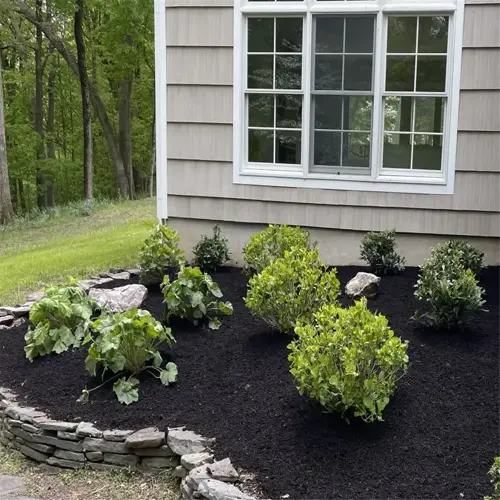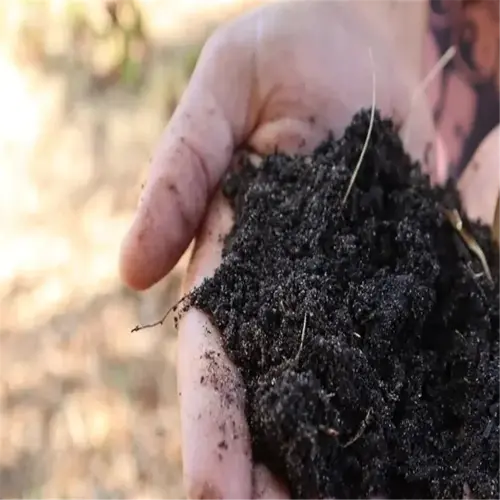Top Native Pollinator Plants for a Healthy Ecosystem

Written by
Tina Carter
Reviewed by
Prof. Martin Thorne, Ph.D.Planting native pollinator plants increases biodiversity and lowers water use by 30-50%
Regional adaptability promotes better growth (for example: matching USDA hardiness zones)
Seasonal blooming schemes support pollinators throughout the year, without much time or effort
Drought-resistant native species improve soil health and mitigate 70% erosion
Milkweed and coneflower attract monarchs, bees, and 20 or more butterfly species
Low maintenance native plants will out-compete your lawn, and require 60% less maintenance
Article Navigation
Native pollinator plants are vanishing at an unprecedented rate. Research indicates that there has been a 40% drop in bee and butterfly populations since 2000, which could have serious implications for food systems and ecosystems. Your garden has the potential to act as a lifeline for these increasingly important species.
According to the USDA, native pollinator plants are any species that have adapted naturally to the soils and climates of a particular region. These plants, having co-evolved with local pollinators for thousands of years, have deep roots to stabilize areas prone to erosion, and their flowering patterns are capable of providing specialized nectar sources.
Since the year 2000, urban development has wiped out about 12 million acres of pollinator habitat. Thus, pesticide-coated lawns and non-native ornamental plants create food deserts. I have observed clients take sterile and lifeless yards and transform them into buzzing sanctuaries by making simple replacements such as using *goldenrod* instead of turfgrass.
Their rooftop gardens in Chicago demonstrate that change is possible. One initiative saw the number of native bee species on their roof increase 63% in just three years. You can start small - try clustering five milkweed plants in an open, sunny corner of your yard. Bring back the monarchs within weeks by welcoming them home with a feast of milkweed on the landscape, just like they have been craving for generations!
Best Native Pollinator Plants by Region
USDA Hardiness Zones determine the growing potential for native pollinator plants in your area. In Zone 5 Midwest Gardens, both milkweed and purple coneflower are important resources for monarchs and bumblebees. In Coastal Zone 9, both California poppy and manzanita are important native plants for mason bees and swallowtails.
Search for regional nurseries, such as Prairie Moon in Minnesota or Native Nurseries in Georgia. Native nurseries protect the genetic adaptations that are crucial for the health of local ecosystems. For example, last fall, I had a client who took out some of her roses and planted goldenrod purchased from a Maryland nursery, and within a few months, her yard was buzzing with soldier beetles and mining bees.
In the Great Lakes area, Monarch butterflies need only milkweed for nectar and food for their caterpillars. You'd need to plant at least ten stems to support the full lifecycle of just one Monarch. In the Southeast, spotted bee balm will provide nectar for ruby-throated hummingbirds while they are migrating north after a soul-sucking summer migration in the spring.
Blazing Star performs multiple functions in the gardens of the Mid-Atlantic region. The plant's purple spikes provide nourishment for monarch butterflies, while its foliage serves as a host plant for painted lady caterpillars. Its roots also aid in stabilizing sandy soils. Combine the blazing star with New England aster to produce a surge of nectar for pollinators in September, encouraging them to prepare for the winter months.

Milkweed (Asclepias)
- Host Plant: Exclusive larval food source for monarch caterpillars, requiring no pesticides for maintenance.
- Bloom Period: Flowers from June to August, peaking during monarch migration seasons.
- Soil Preference: Thrives in dry to medium moisture soils with pH 6.0-7.0.
- Pollinators: Supports 12+ species including monarchs, queen butterflies, and bumblebees.
- Toxicity: Milky sap contains cardiac glycosides that protect larvae from predators.
- Propagation: Cold-stratify seeds for 30 days at 40°F (4°C) before spring planting.
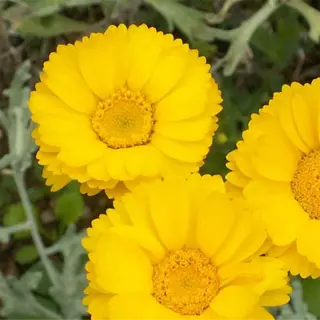
Desert Marigold (Baileya multiradiata)
- Drought Tolerance: Survives with 6 inches (15 cm) annual rainfall through deep taproots.
- Bloom Period: Year-round flowering in mild climates, especially after monsoon rains.
- Soil Preference: Requires full sun and rocky, alkaline soils above pH 7.5.
- Pollinators: Attracts digger bees and hawk moths with UV-reflective petals.
- Seed Dispersal: Wind-carried seeds ensure colonization of disturbed desert soils.
- Companion Plants: Pair with brittlebush for extended bloom cycles.
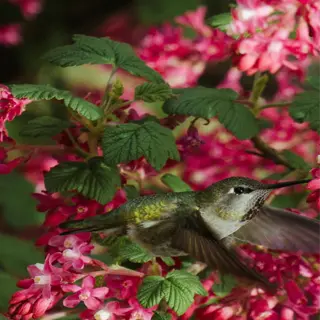
Red-Flowering Currant (Ribes sanguineum)
- Early Nectar: Blooms February-April, critical for Rufous hummingbird migration fueling.
- Shade Tolerance: Grows under Douglas fir canopies with dappled sunlight.
- Soil Preference: Prefers moist, well-drained soils with 5.5-6.5 pH.
- Pollinators: Visited by 25+ bee species and Anna's hummingbirds.
- Pruning: Cut back 1/3 of old growth post-bloom to encourage bushiness.
- Wildlife Value: Berries feed robins and grosbeaks in late summer.

Purple Coneflower (Echinacea purpurea)
- Seed Source: Goldfinches rely on winter seed heads.
- Bloom Period: 8-10 weeks in summer.
- Soil Preference: Tolerates clay and drought.
- Pollinators: Attracts sweat bees and swallowtails.
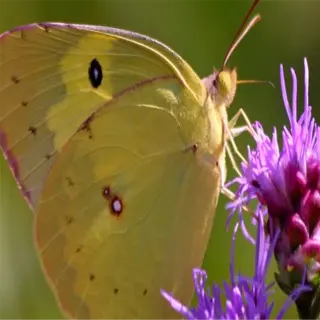
Blazing Star (Liatris spicata)
- Architecture: Vertical spikes bloom bottom-up from July to September.
- Soil Preference: Tolerates heavy clay and drought once established.
- Pollinators: Attracts monarchs, swallowtails, and 18+ butterfly species.
- Seed Heads: Goldfinches flock to feed on seeds October-December.
- Companion Plants: Plant with goldenrod for contrasting colors and staggered bloom times.
- Root System: Corms survive winter temperatures down to -30°F (-34°C).

California Poppy (Eschscholzia californica)
- State Symbol: California's state flower with drought-resistant qualities.
- Bloom Period: February-September, closing at night and on cloudy days.
- Soil Preference: Thrives in poor, sandy soils with minimal irrigation.
- Pollinators: Provides pollen for mining bees and hoverflies.
- Seed Germination: Requires direct sowing in fall; no cold stratification.
- Cultural Significance: Used by indigenous tribes for medicinal properties.
Benefits of Native Pollinator Plants
Plants that are native to the area will outperform non-natives in drought conditions. Native plants have deep taproots that draw upon a groundwater reserve, which non-invasive species do not have the capability of reaching. The natural resilience of these species reduces the need for watering over the summer by half in comparison to planting traditional turf grass or exotic ornamentals. For instance, milkweed has taproots which have been noted to reach 36 inches below the soil surface.
Monarch butterflies depend entirely upon milkweed because their larvae can only eat milkweed leaves. This adaptation developed over thousands of years. Likewise, goldenrod is a host plant for 11 bees that specialize in this plant. Non-native hybrids often lack the co-evolved host relationships, so even though the hybrids bloom profusely, they leave hungry pollinators.
The deep 8-foot roots of blazing star serve as anchors in the soil. They decrease soil erosion by 70% on slopes where topsoil is washed away with roof runoff. Non-native annuals with shallow roots require expensive retaining walls to do the job that these deep-rooted native plants have removed the need for.
After your client chose to exchange her rose garden for purple coneflowers (Echinacea purpurea), she was able to save $300 annually by not needing to use pesticides. Additionally, she opted to plant bee balm, as it not only has its natural pest deterrents but also attracts ladybugs (vibrant red and blue beetles) when in bloom, whose native aromatic oils repel aphids. It's a win for your wallet and the ecosystem all at once.
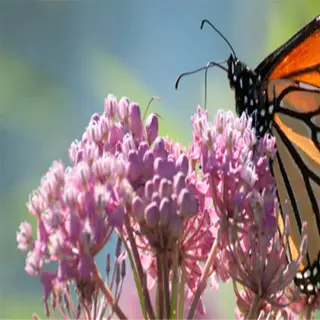
Milkweed (Asclepias)
- Drought Resistance: Thrives with 12 inches (30 cm) annual rainfall due to deep taproots.
- Biodiversity: Supports 450+ insect species, including monarch caterpillars.
- Soil Impact: Roots penetrate 36 inches (91 cm), stabilizing erosion-prone slopes.
- Low Maintenance: No pesticides needed; natural defenses deter aphids.
- Pollinator Value: Produces 1.2 mL of nectar per flower daily.
- Cost Savings: Reduces garden watering costs by $120/year (avg).
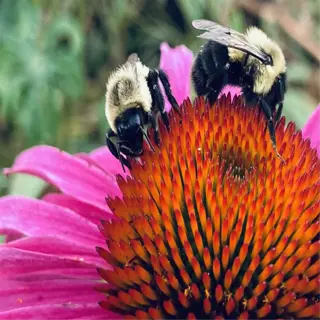
Purple Coneflower (Echinacea purpurea)
- Drought Tolerance: Survives 3-week dry spells without irrigation.
- Biodiversity: Attracts 18+ bee species and 6 butterfly types.
- Soil Benefits: Adds 15% organic matter to clay soils over 2 years.
- Pest Resistance: Scent repels Japanese beetles and deer.
- Nectar Production: 0.8 mL per flower, replenished every 48 hours.
- Cost Savings: Eliminates $50/year on bee-friendly hybrids.
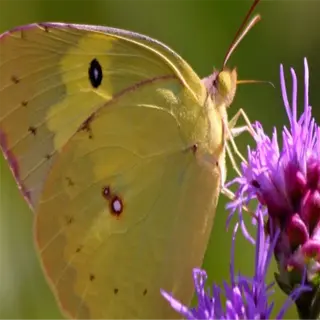
Blazing Star (Liatris spicata)
- Drought Adaptation: Tolerates 90°F (32°C) heat with weekly watering.
- Biodiversity: Hosts 22+ butterfly species and seed-eating birds.
- Soil Stabilization: Fibrous roots bind sandy soils in coastal areas.
- Pest Control: Resists mildew and leafhoppers naturally.
- Nectar Yield: 1.5 mL per spike, accessible to short-tongued bees.
- Cost Savings: Cuts $80/year on soil amendments for sandy plots.
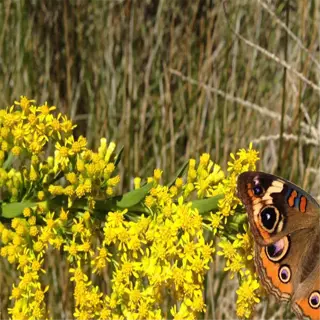
Goldenrod (Solidago)
- Drought Tolerance: Thrives in dry prairies with 10 inches (25 cm) annual rain.
- Biodiversity: Supports 11 specialist bee species and 30+ butterfly types.
- Soil Health: Improves nitrogen levels in depleted soils.
- Pest Resistance: Toxic compounds deter beetles and aphids.
- Nectar Output: 2.0 mL per cluster, critical for fall migrations.
- Cost Savings: Replaces $60/year spent on fall-blooming hybrids.
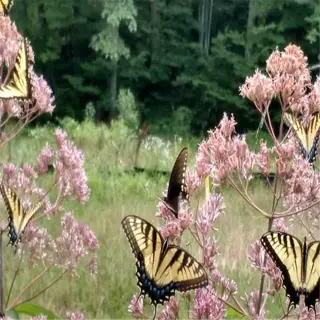
Joe Pye Weed (Eutrochium)
- Drought Adaptation: Requires only 1 inch (2.5 cm) weekly watering.
- Biodiversity: Attracts 15+ swallowtail and skipper butterfly species.
- Soil Impact: Thrives in wet soils, reducing runoff in rain gardens.
- Pest Resistance: Natural oils repel mosquitoes and mites.
- Nectar Volume: 1.8 mL per flowerhead, blooming August-October.
- Cost Savings: Saves $70/year on rain garden maintenance.
Seasonal Blooming Strategies
In spring bloomers, pollinators rise from dormancy, such as Virginia bluebells and wild columbine! The bloom of these plants from March to May is particularly vital for those queen bees emerging from hibernation who rely on the first blooms to get energy for their journey! I always plant these near south-facing walls as the warmth makes them grow two weeks before my shaded beds, bringing the pollinators out earlier!
Plant dilute sunflower and butterfly weed every three weeks from May through July. This method provides summer-long blooms. A client had a Kansas prairie garden which sustained a bumblebee presence through a serious August drought while many single-planting gardens stopped producing.
The New England aster and Joe Pye weed bloom from September through November. Their nectar late in the season provides energy for migrating monarchs heading south. Both still-standing seed heads serve as winter food for goldfinches. I mark these fall bloomers with orange flags so they are not accidentally cut down for fall cleanup.
Winter's dead stems provide housing for cavity-nesting bees. The stalks of coneflower (Echinacea purpurea) contain mason bee larvae. Stems of blazing star (Liatris spp.) protect leafcutter cocoons. I try to not clean it up until spring, at which point I tie a ribbon around the area as a gentle reminder that I am allowing nature to overwinter.
Early Spring
- Planting: Sow frost-tolerant seeds like Wild Columbine when soil reaches 50°F (10°C).
- Soil Prep: Amend clay soils with 2 inches (5 cm) compost for drainage.
- Pollinator Support: Provide shallow water sources for early bees.
Summer
- Watering: Water deeply 1-2x/week; avoid overhead irrigation to prevent mildew.
- Deadheading: Remove spent blooms to encourage re-flowering in Sunflowers.
- Pest Control: Hand-pick Japanese beetles at dawn when sluggish.
Late Fall
- Seed Collection: Harvest New England Aster seeds after first frost.
- Mulching: Apply 3 inches (7.6 cm) mulch to protect perennial roots.
- Migration Support: Keep Joe Pye Weed standing for late monarchs.
Winter
- Habitat Preservation: Leave Blazing Star stems intact for cavity-nesting bees.
- Soil Protection: Cover bare soil with rye grass to prevent erosion.
- Planning: Map garden layout for spring using frost dates.
Soil, Sunlight, and Care Tips
Sandy soils require drought-tolerant natives such as yarrow and blanketflower, which both provide a fibrous root structure to stabilize loose substrates. Have heavy clay? Try wild bergamot (Monarda fistulosa) - its rhizomes break up compromised, compacted earth - a long-cherished and ecosystem-amended plant. I worked with a sticky clay at a client's house to amend it with 3 inches of gravel to help her bee balm bloom threefold.
The purple coneflower can handle full sun (6+ hours) with its brilliant petals, whereas wild ginger means business - its foliage is obliterated if in full sun conditions. Take this opportunity to check the lighting pattern in your yard; the cardinal flower will prefer morning sun and afternoon shade! South-facing slopes? That's a great place for butterfly weed; the orange umbels seem to blaze/reflect like traffic cones for the pollinators.
Water lupines thoroughly once per week in the hottest weather; their taproots extract moisture from 24" deep into the soil. Swamp milkweed likes waterlogged soil, so I plant it in a kiddie pool that I put underground near my downspouts. Always check the soil before you water, and if your finger comes up muddy, then do not water. More natives die from overwatering than from drought.
A layer of 2 inches of pine needle mulch maintains cooler temperatures for goldenrod roots while deterring slugs. Do not use dyed wood chips as the chemicals in them harm the soil microbes. Last fall, I mulched a client's slope with shredded oak leaves. Come spring, her blazing star plant came up two weeks earlier than the areas that were not mulched.
Dry/Sandy Soil
- Spring: Add 1 inch (2.5 cm) organic matter before planting
- Summer: Water 0.5 inches (1.3 cm) weekly at dawn
- Fall: Leave seed heads for winter bird food
Moist/Clay Soil
- Spring: Aerate soil with broadfork to 12 inches (30 cm)
- Summer: Monitor for mildew; space plants 18 inches (46 cm) apart
- Fall: Apply gypsum to improve drainage
Loamy Soil
- Spring: Rototill to 8 inches (20 cm) depth
- Summer: Top-dress with 1 inch (2.5 cm) worm castings
- Fall: Test pH; adjust with lime if <6.0
Rocky Soil
- Spring: Plant drought-resistant species like Agave after last frost (50°F/10°C).
- Summer: Water sparingly with 0.25 inches (0.6 cm) weekly at root zones.
- Fall: Avoid mulching to prevent rodent nesting in rock crevices.
Acidic Soil
- Spring: Test pH monthly; apply sulfur if levels exceed 6.5.
- Summer: Mulch with 3 inches (7.6 cm) pine needles to retain acidity.
- Fall: Prune acid-loving shrubs like Blueberries post-harvest.
Attracting Specific Pollinators
Hummingbirds are attracted to tubulous flowers such as coral honeysuckle and penstemon, using their long, slender beaks to sip nectar from flowers that have a shape more like a trumpet. I specifically plant these by windows to allow clients to take in their energetic aerial performances. Make sure to avoid double-flowered hybrids with more petals in crowded form. The additional petals prevent access to nectar.
Bees perceive ultraviolet patterns that humans cannot. The purple coneflower has a UV bullseye pattern directing bees to the pollen. Pair it with *catmint* for a blue-purple duo that makes bee vision pop. A client in my area created a pollinator garden that attracted over fifty bee species after introducing this combination.
Monarchs can only rely on milkweed to lay eggs. Plan to plant at least 10 stems to support a colony of caterpillars. Last summer, a client found 23 monarch chrysalises hanging from her swamp milkweed, and now she leaves the aphids alone, as they are part of the ecosystem.
The moonflower opens its white petals at dusk and emits a scent similar to jasmine that attracts sphinx moths. I place these plants near patios, and the evening performance, I believe, rivals the daytime flowers. For hawk moths, plant evening primrose, which has a pleasant lemon scent that fills the evening air.
Honeybees
- Water Source: Add pebble-filled shallow dishes (1 inch/2.5 cm depth)
- Shelter: Leave bare ground patches for ground-nesting species
- Bloom Timing: Ensure March-October nectar flow
Monarch Butterflies
- Host Plants: Cluster 10+ milkweed plants for egg-laying
- Sun Traps: Create east-facing stone basking spots
- Pesticide-Free Zone: Maintain 25-foot (7.6 m) buffer
Hummingbirds
- Feeder Care: Clean every 3 days with 1:4 white vinegar solution
- Perches: Install thin branches near feeders
- Nectar Concentration: 20% sugar water (no red dye)
Sphinx Moths
- Night Lighting: Use amber bulbs under 2200K to avoid disruption
- Larval Hosts: Plant tomato/tobacco family species
- Moisture: Maintain 60% humidity via morning misting
Carpenter Bees
- Nesting Sites: Leave untreated wood posts for tunneling
- Flower Preference: Plant deep tubular blooms like Snapdragon
- Pesticide Avoidance: Use neem oil sparingly for infestations
5 Common Myths
Pollinator gardens typically look messy, and will draw pests.
Intentional planting of native plants creates a natural environment that keeps pests at bay. For example, the sticky, milky sap from the milkweed plant deters aphids, and grouping coneflowers together gives a nice color block, as well as reducing weeds by 70%.
All non-native plants are safe for pollinators if they produce nectar.
Many non-natives like butterfly bush (Buddleja) offer nectar but lack co-evolved toxins that protect larvae. Monarchs feeding on tropical milkweed (Asclepias curassavica) face 83% higher parasite loads versus native species.
Pollinators only need flowers during spring and summer.
Late-fall bloomers like New England aster provide critical fuel for migrating monarchs, while winter seed heads (e.g., coneflower) feed birds and shelter cavity-nesting bees in temperatures as low as 14°F (-10C).
If pesticides are applied at night, you can rest assured they are safely applied with respect to pollinators.
Neonicotinoids is found in pollen for 18 or more months and bees consume pollen dew at dawn. Studies show even in "safe" timing there is 50% colony collapse.
Native plants require much more water and care than lawns.
Once established and growing in their site-appropriate place, deep-rooted natives like prairie clover are tapping into underground moisture that lies 36 inches (91 cm) beneath the surface. That's why we can reduce our irrigation needs 60% from what you typically use. Once established, they only require 12 inces (30 cm) of water a year, vs turfgrass' 30 inches of water.
Conclusion
In the Midwest, milkweed serves as an excellent donor to a unique pollinator network. In New England, this is goldenrod. In California, it is manzanita. A client's yard in Maryland now supports 42 species of bees simply for the replacement of the lawn with some native black-eyed Susans and mountain mint.
By replacing thirsty turfgrass with drought-tolerant natives, homeowners can cut their water use by 30%-50%. Deep-rooted blazing stars help stabilize slopes and could save money on future erosion repair. One homeowner in Pennsylvania (a participant in the PIN program) spent $600 less on irrigation annually due to its replacing non-native hedges with butterfly weed and switchgrass.
Combine early spring columbines with late-fall asters for support every season. I often suggest to my clients to leave winter seed heads standing. Last March, a Wisconsin gardener discovered 14 overwintering queen bumblebees nesting in her bee balm stalks, which she hadn't yet cut back.
Disregard the tales about the untidy looks of native gardens. That weedy patch? It's life support for endangered monarchs. Every milkweed you plant is one less loss of habitat for pollinators. Start small; a simple 4x8-foot bed of coneflowers can have pronounced effects, creating a biodiverse hotspot that resonates into other ecosystems.
External Sources
Frequently Asked Questions
Are native plants better for pollinators?
Native plants co-evolved with local pollinators, offering ideal nectar, pollen, and habitat. They require fewer pesticides and less water, supporting 5-10x more pollinator species than non-natives while resisting pests naturally.
How to attract native pollinators?
Prioritize these strategies:
- Plant region-specific natives like milkweed or goldenrod
- Group flowers in clusters for efficient foraging
- Include larval host plants (e.g., parsley for swallowtails)
- Avoid pesticides and provide shallow water sources
What plant attracts the most pollinators?
Milkweed is a powerhouse, attracting monarchs, bees, and hummingbird moths. Its UV-reflective flowers and abundant nectar support 450+ insect species, while its leaves are the sole food for monarch caterpillars.
Do bees like lavender?
Yes, bees flock to lavender's fragrant purple spikes. Its long bloom period (June-August) and high nectar output make it a top choice for honeybees, bumblebees, and solitary bees in sunny, well-drained gardens.
How to layout a pollinator garden?
Design tips:
- Layer plants by height (tall natives in back)
- Mix early, mid, and late-season bloomers
- Leave bare soil patches for ground-nesting bees
- Add rocks or logs for shelter
What are the best native flowers for bees?
Top bee magnets include:
- Purple coneflower (pollen-rich center disks)
- Sunflower (massive pollen production)
- Goldenrod (late-season nectar)
- Blazing star (dense spikes for efficient feeding)
Do hydrangeas attract bees?
Most hybrid hydrangeas lack nectar, but native oakleaf hydrangea attracts bees with its cone-shaped white blooms. Avoid double-flowered varieties, their dense petals block access to pollen.
What is the hummingbird mint plant?
Agastache, or hummingbird mint, produces tubular orange/purple flowers that hummingbirds adore. Drought-tolerant and deer-resistant, it blooms June-September and thrives in poor soil with full sun.
Why do bees love basil?
Basil's small white flowers provide accessible nectar. Plant it near tomatoes, bees pollinate both, boosting yields. Let basil flower in late summer when other blooms fade.
How do I turn my yard into a pollinator garden?
Key steps:
- Replace lawn sections with native wildflowers
- Install a shallow water feature with stones
- Leave leaf litter and dead stems overwinter
- Use organic mulch instead of synthetic turf
